No Milk, No Acne – The Diet That Can Change Your Face
Welcome to the No Milk, No Acne way of life! Life with acne isn’t easy – I get that – and it can be a real rollercoaster. However, I hope the story about my journey with acne and what I’ve learned can help you as you walk the path to clear skin and good health. Your journey may not be the same as mine, but I hope you’ll have a smoother one than I did, as I’ve done some of the research work for you so I can guide you. Your No Milk, No Acne adventure begins!
The Journey Begins…
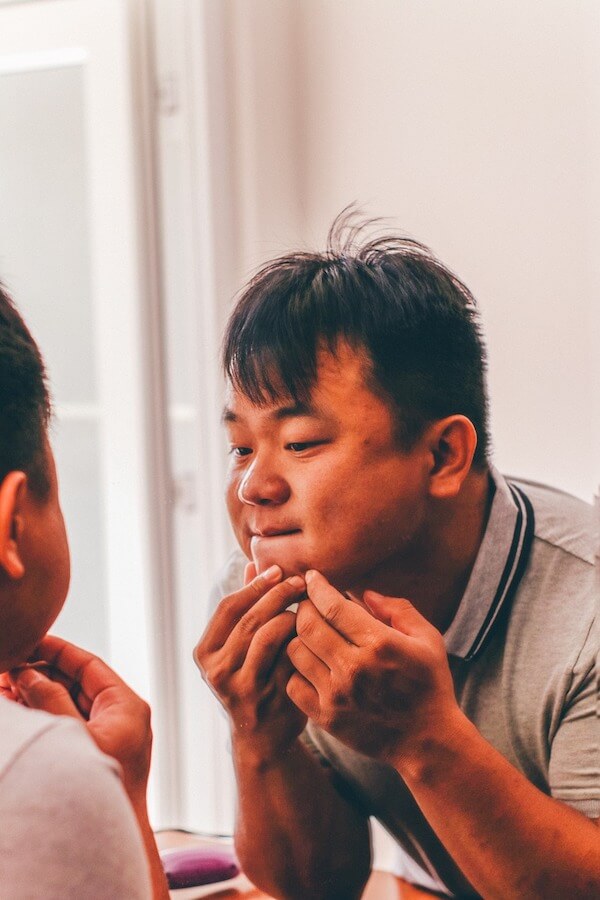
For me, it all started when my son entered his teens and went through adolescence. This is a tough time for any mom as she watches her little boy turn into a young man (not wanting to hug her in public or even admit that she exists, for example). Every mother goes through that. However, I soon noticed that my son was struggling more than I really expected – and I suspected that his severe acne was to blame.
It seems so unfair, doesn’t it? Right at the time of life when you’re discovering who you are and what the world is really like, the time when peer pressure is at its worst (thanks for nothing, high school!), the time when looking good seems particularly important, and the time when every setback and problem seems like a world-shattering disaster… along comes acne. What boy becoming a man (or anybody, really) can feel his best with a face covered with blotches, oil and pimples? Things are made worse when an adolescent boy starts learning how to shave, irritating the skin on his face and subjecting it to regular scraping, cuts, nicks and abrasions.
Of course, girls get severe acne as well – it’s not a problem that’s exclusive to boys, although in boys, severe acne tends to be a lot more frequent. There’s a reason for that, which we will dig into a bit later. However, at least girls can try to cover up redness, blotches and blackheads with makeup, which our culture frowns on in boys.
Like any caring mom, I wanted the best for my son, and I wanted to find a way to help him treat that acne. The first step was to make sure that he was caring for his skin right through proper hygiene. After all, I washed some of his favourite T-shirts, and I knew that some of them could have just about walked into the washing machine all by themselves. This required a spot of detective work, given that he was at that stage when he would only talk to me in grunts. However, after encouraging him into a regular hygiene routine, especially after playing sports (I’ll spare you the arguments that involved!), the problem with acne still remained.
The next step was to head down to the local drugstore to see what we could find in the way of over-the-counter medications. We found some reasonably good lotions and creams that had some effect on my son’s pimples. The ones containing salicylic acid were particularly good. However, there were a few drawbacks to them, all the same. For one thing, the good ones weren’t particularly cheap, and we were having to buy them all the time. Like most people, we have to watch our budget a bit, and there were some things that we would have preferred to spend our cash on. What’s more, the biggest problem with these acne medications was that they could only really be used once a pimple had broken out as a way of attacking the infection and soothing the skin.
Prevention is better than the cure, after all, so we figured that it would be much better to find a way to stop my son’s issues with breakouts and blackheads before they happened, rather than merely reacting and dousing them with over-the-counter acne creams. But what was the best way to prevent acne?
Trying to understand this question sent me down a path of research. After all, I figured that if we knew more about acne and why it happens, we’d know how to beat it. It was time to do some homework. This turned out to be a project that my son and I could work on together, and it was something that brought us together, which was an added bonus.
We learned quite a lot. However, because we’ve done the hard research work, you don’t have to!
Understanding Acne
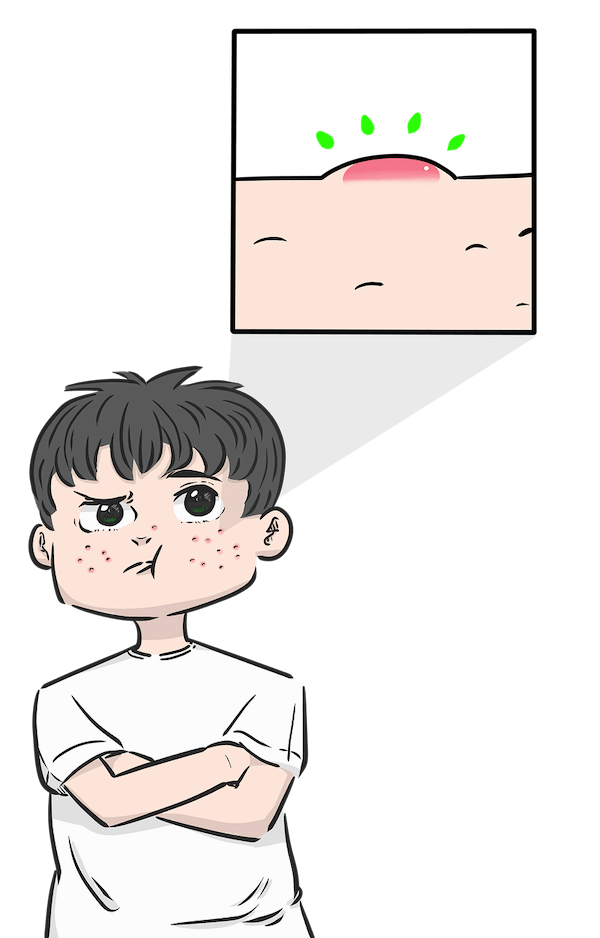
The first step in understanding anything is to make sure that you get the definitions right. “Acne” is a catch-all term covering a range of related skin conditions. All of them have a common cause, but some are more upsetting and painful (physically painful) to deal with. However, acne can be broken down into blackheads, whiteheads and pimples.
All acne is caused by the skin producing too much oil. It’s normal for the skin to produce some oil. This helps the skin stay supple, and it also helps the skin stay waterproof – after all, one of the jobs of the skin is to keep water out of our insides! In fact, if the skin doesn’t produce enough oil, it is very easily irritated and itchy and is prone to cracking and flaking. This oil is produced by pores, which are openings in the skin. Contrary to what you may have heard, these are not the places where sweat comes out – sweat comes out through sweat ducts, which are a lot smaller than pores. As well as producing oils, these pores are often also where hairs grow from the skin.
But what happens when the skin produces too much oil? In many cases, this leads to oils becoming trapped in the pores. Lots of things can block the pores, ranging from mud and grime through to pollutants from car exhausts to makeup to sweat and dead skin. Dead skin is inevitable. After all, the skin sheds its outer layer all the time as new layers grow up from underneath (seriously, we have just about as many layers as onions!). If the oil lingers at the skin surface, it oxidizes and turns dark blackish-brown, forming a blackhead. It’s kind of like what happens when you cut an apple or a banana – if it’s exposed to the air for any length of time, it turns brown.
Blackheads are annoying enough, but if the blockage doesn’t clear and/or the production of oil doesn’t slow down, more will build up in the pore. Given enough time, the sides of the pores won’t be able to stand the pressure, and they will break. This will allow bacteria living on the skin to enter, and the body’s immune response to kick in. If the response is strong enough or prolonged enough, this will involve swelling, redness, soreness, heat and pus – in other words, a pimple. If your immune system is strong and healthy, pimples don’t seem to be so severe, which is why, in many people, stress, ill health, and generally being run-down often leads to pimples.
In some cases, a blackhead will become trapped under a layer of skin. In this case, the plug of sebum or natural oils will not be exposed to oxygen and will remain white. This is known as a whitehead.
You’ll find a range of other terms being thrown around in discussions of acne. These include the following:
Pustules
This is another name for pimples, specifically pimples that have come to a head filled with pus (not to be confused with whiteheads)
Papules
These are pimples that are red and swollen but haven’t come to a head
Nodules
These are larger than papules, although they are also red and swollen without a “head” of pus. They feel solid and are often painful.
Cysts
Painful lumps filled with pus that are deeper in the skin
Comedo
This is a more scientific-sounding word for blackheads. In the plural, it is pronounced, “comedones”. This leads to the term “comedogenic”, which means “likely to cause blackheads”. Weirdly, the name “comedo” refers to a type of worm or grub, as people used to believe that blackheads were a type of worm that lived in the skin. The dark oxidized tip looked like the head of a caterpillar, and the whitish-yellow plug of sebum looked like its body. I guess we can be grateful that worms and grubs aren’t the cause of blackheads and acne (I’m feeling itchy and squirming just at the thought of it).
What’s The Deal With Milk?
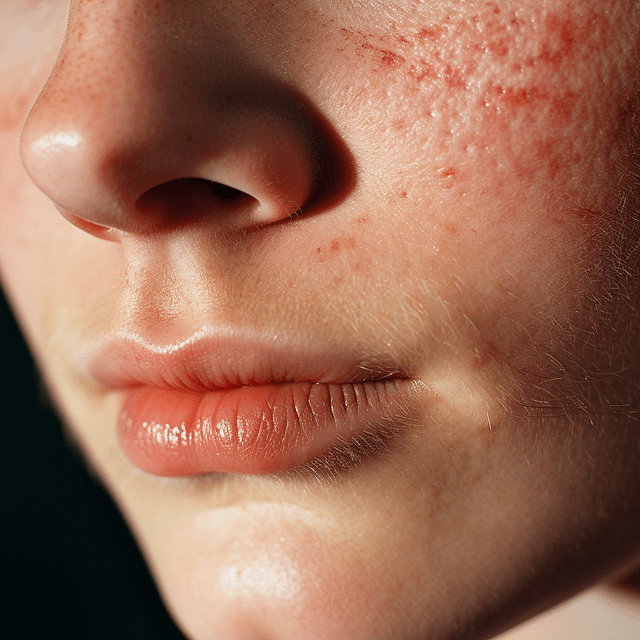
OK, so that’s more or less what happens with acne and what causes it: excess oil produced by the skin, ultimately leading to pimples, infections and breakouts. So what have milk and dairy products got to do with this?
Once again, we’re going to have to take a bit of a dive into the science. The link between milk and acne has been studied by quite a few scientists who have published studies in reputable scientific journals, so it’s not just some wacky idea dreamed up out of nowhere!
The link between acne and the intake of dairy products is hormones. The body has all sorts of hormones, but the ones we’re thinking about here are insulin-like growth factor-1, commonly known as IGF-1, and a bunch of androgens – which happen to be stimulated by IGF-1.
IGF-1 is quite a useful hormone. It is described as an anabolic hormone. Don’t let the word “anabolic” scare you. IGF-1 is produced naturally by your body, so it isn’t, in itself, an illegal performance-enhancing drug. “Anabolic” is simply used to describe a process in the body where something is built. The something can be muscles, of course, but it could also be bone, hair, nerves and all other tissues. In short, we all need some IGF-1 for proper growth and repair of the body’s tissues.
However, one of the things that IGF-1 stimulates the production of is skin oils. In the normal course of things, this is fine. The skin needs some oils to stay supple, as we said earlier. All the same, during puberty, the levels of IGF-1 go bananas as part of that teenage growth spurt. These high levels of IGF-1 rev the body right up, and they also increase the body’s production of androgens. Androgens are sex hormones (including testosterone), and teenage boys produce a lot of them. Androgens stimulate the production of facial hair as well as the increased muscle mass and bone density of boys compared with girls. However, the high levels of androgens also lead to increased production of sebum in the skin. This is why acne is usually worse during adolescence and why it’s more pronounced in boys than in girls.
The question you’re all asking now is where milk comes into all this. Well, levels of IGF-1 are regulated by its close cousin, insulin. Insulin is also an anabolic hormone, and it regulates the intake of all the nutrients, which it does by controlling the amount of glucose (blood sugar) taken up by the cells. And yes, like IGF-1, insulin also increases the body’s production of skin oils. If you eat anything – anything at all – then the body will produce a dollop of insulin to help ensure that the energy released by that food will get into the cells where it’s needed for growth (except when Type 1 or Type 2 diabetes are at work, but that’s another story!). So milk, like other foods, stimulates the body to produce insulin.
But that’s not all, folks. Milk contains some proteins that stimulate the liver to increase its production of IGF-1 – even if the body’s already producing plenty, thank you very much. After all, milk is secreted by mammals to help baby animals grow rapidly – and it doesn’t just do this by providing lots of calcium. Milk also encourages growth by containing a protein that stimulates the production of IGF-1. It’s also possible that some dairy cows have been given supplements that increase their levels of IGF-1 so that they produce more milk, although it’s not certain whether consuming the milk produced by these cows leads to higher levels of IGF-1 in humans (better safe than sorry, I say!).
The fact that it’s the proteins in the milk that triggers the body to produce more IGF-1 rather than, say, the fats is nicely (?) illustrated by what happens with bodybuilders. As IGF-1 is an anabolic hormone, the more of it the body has, the more it can build muscle mass. And if there’s one thing a serious bodybuilder wants, it’s more muscle mass. Artificial synthetic anabolic steroids are, quite rightly, banned because they have all sorts of serious and unwanted side effects. However, nobody can stop your own body from producing its very own IGF-1, so bodybuilders found ways to stimulate this. As well as exercising and challenging their muscles, which sends out the signals to produce more IGF-1 and build bigger muscles, bodybuilders will take supplements that allow them to boost their levels of IGF-1. It wasn’t long before they discovered that whey protein did the trick very nicely. Whey is, of course, a dairy product where most of the fats have been separated out (mostly during the process of making cheese), leaving more or less straight protein. This helped bodybuilders put on the muscle mass they wanted, all right, but it also led to the problem of bodybuilders’ acne. Bodybuilders’ acne was simply a result of the whey protein (and the resulting increase in IGF-1 levels) leading to increased oil production in the skin.
The fact that milk protein is what’s responsible for a spike in IGF-1 levels, leading to an increase in the risk of severe acne, was found by several studies. Researchers found that the chances of severe acne were higher in adolescents who consumed low-fat dairy products and skim milk rather than the full-fat equivalents. In other words, it’s not the fats in ice cream and pizza that lead to oily skin!
More and more research has investigated the link between the intake of dairy products and acne problems, and the link is well-backed by science and seems to hold true for boys and girls.
Tricks And Tips For The No Milk, No Acne Lifestyle
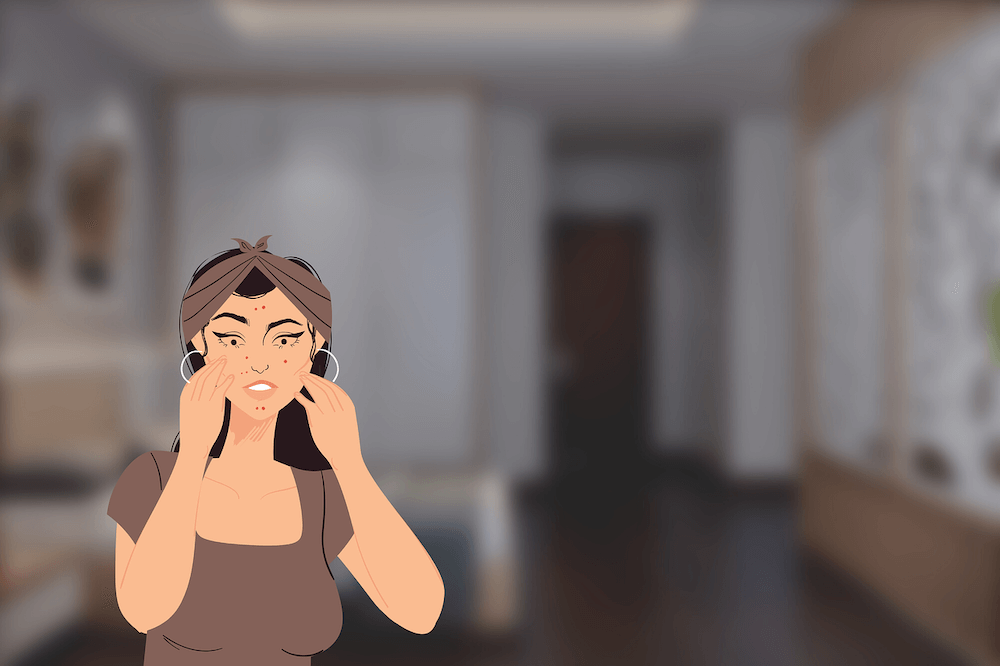
OK, so the science shows that the No Milk No Acne lifestyle will help reduce the severity of acne and can, in some cases, fix the problem altogether. But I can just about hear your questions from here – and I don’t blame you. I certainly had a few questions when embarking on this journey as well!
On the surface, it sounds so simple: cutting out dairy foods from your diet and seeing the effect that this has on your problems with acne. However, it’s always wise to do your homework and to have a good talk with your medical care provider before diving in.
The biggest issue – and the main question that a lot of people have – is the issue of calcium intake. After all, dairy foods are among the main sources of calcium in the typical Western diet and in several non-Western diets as well. Calcium is important for a number of things, especially bone growth. Given that problems with acne tend to turn up in the teenage years when the body is trying to develop more bone mass, this is an important thing to consider. After all, nobody should have to trade between suffering from acne in the teenage years with osteoporosis later in life.
How you are going to ensure an adequate intake of calcium is one of the things that you have to work out, possibly with help from a trained professional or experienced nutritionist. However, we can offer a few basic tips and ideas here:
- If you want to follow the No Milk, No Acne way of life but don’t want to head down the vegetarian or vegan pathway, then canned fish is an excellent way to get your calcium. Canning softens the bones of fish so they are safe to eat and easy to digest – and bone is a good source of calcium for obvious reasons… as long as you eat the whole bones. All sorts of fish are available canned, from salmon and tuna through to mackerel, sardines and anchovies. However, contrary to what you might think, bone broth isn’t a good source of calcium, as the calcium remains in the solid bit of bone.
- Take a calcium supplement, such as dolomite.
- Dark green leafy vegetables are a good plant source of calcium, but you have to eat a lot of them to get the same amount of calcium as you would have done in a glass of milk. Kale, cabbage, chard, broccoli, and spinach are all good options – and they’ve got other health benefits for you as well.
- Nuts and seeds are often good sources of non-dairy calcium, with almonds thought to be the best. These also provide you with healthy fats (you do need some fats in your diet, and oils in your diet won’t lead to oily skin). You can also use most nuts to make dairy-free butter and milk.
- Beans and other legumes. As these are also seeds, they tend to be good sources of dietary calcium.
- Fortified foods: Some foods have been fortified with calcium. You’ll need to read the labels carefully to make sure that a bit of dairy hasn’t been snuck into the recipe.
The next question a lot of people have is what to eat instead of their usual favourite dairy foods. Of course, there are a host of websites and recipe books that will help you with this, but it will take some trial and error to find out what works best for you, as everybody’s tastes are different. However, here are some ideas to start you off:
- Instead of milk in coffee or tea, try a non-dairy substitute such as soy milk or almond milk.
- Instead of sour cream on nachos or jacket potatoes, try homemade mayonnaise or guacamole with plenty of lemon juice
- Instead of cheese in a sandwich, try scrambled eggs or tofu
- Instead of milk on breakfast cereals, try coconut milk or even coconut cream
- Instead of ice cream, try fruit-based sorbets or make your own with coconut milk
Have fun as you explore the No Milk, No Acne way of life – consider it your new food adventure.
Other Skincare Tips To Help With Acne
Even if you change your diet to cut out dairy and help improve the appearance of your skin by improving your acne, it’s still important to look after the outside of your skin. After all, although excess oil production, stimulated by elevated levels of IGF1-1, is the main culprit for acne, what’s on the surface of your skin also helps clog pores and trap oil inside them. This is why good skincare is important.
However, it’s important not to make the very common mistake of trying to deal with oily skin by scrubbing it harshly to remove as much oil as you can. Remember that the skin actually needs oils to remain supple, and if you dry it out by excessive washing and scrubbing, it will respond by producing more oil to compensate. Not what you want. So, while it’s important to have a regular skincare routine, it’s important not to overdo it.
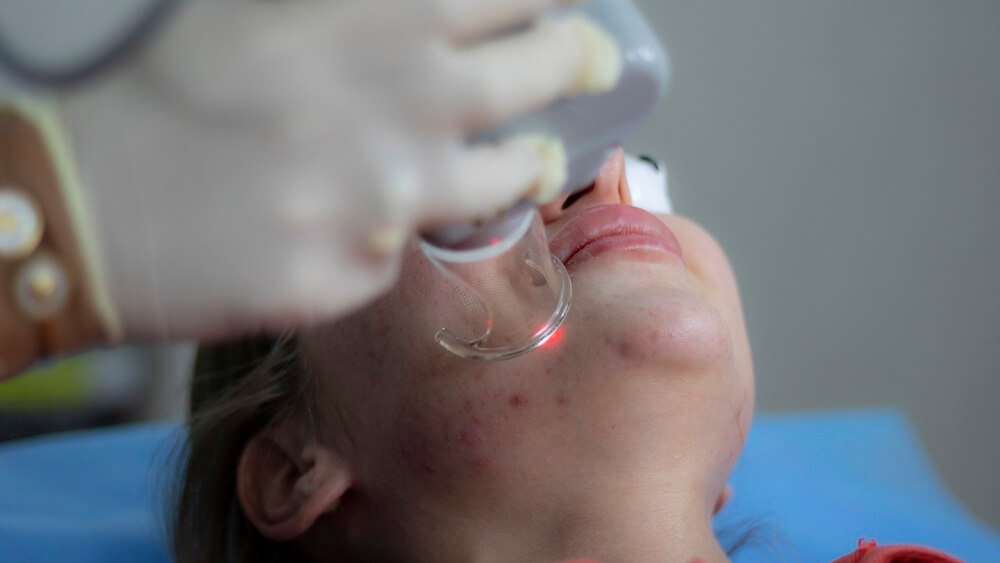
The ideal skincare routine should involve washing and moisturizing, at the very least. Washing can be done with good old soap and water – as long as the soap isn’t too harsh and your skin isn’t irritated by fragrances – or you can use a cleansing lotion, which is usually based on oils (watch out for products labelled “non-comedogenic”). Even if your skin is oil, don’t skip out on moisturizing. This is especially the case if only parts of your skin are prone to breakouts, such as the infamous T-zone (forehead, nose and chin). The other parts of your skin will need to remain supple, and moisturizer will help with this. It will help stop the outer layer of the skin from becoming dry and flaky, which leads to the skin looking dull and pores clogging more readily.
If you prefer to use a medicated cream for tackling angry pimples, then apply it after washing and before moisturizing your face. If you wear makeup, make sure that you use clean, fresh tools to apply it rather than things that have already touched your face, as old tools can carry some of the bacteria that inflame the skin and cause acne.
Although washing and moisturizing should be done every day, some of the special treats you can also use on your skin are just that: special treats. They aren’t for every day. These special skin treats include steam facials, exfoliation (removing the dead outer layer of the skin chemically or physically) and masks.
If you’re a guy, you have the option of growing a beard, which means that (a) the skin isn’t continually scraped and nicked, which also allows bacteria to get in; (b) the chances of pimple-inducing ingrown hairs are reduced dramatically and (c) the chin, cheeks and neck are covered up so acne doesn’t show. However, this isn’t always possible with certain dress codes. In this case, remember to wash the face thoroughly to remove dirt before shaving, rinse thoroughly to avoid residue being left on the skin and use a good aftershave to kill bacteria (it’s not just to make you smell good!). You may have to try a variety of razors before you find one that works best for you without giving you too many ingrown hairs. Some guys find blades work best for them, but others find that electric shavers are less irritating.
Last but not least, remember what your grandmother told you and DON’T SQUEEZE THOSE PIMPLES!…